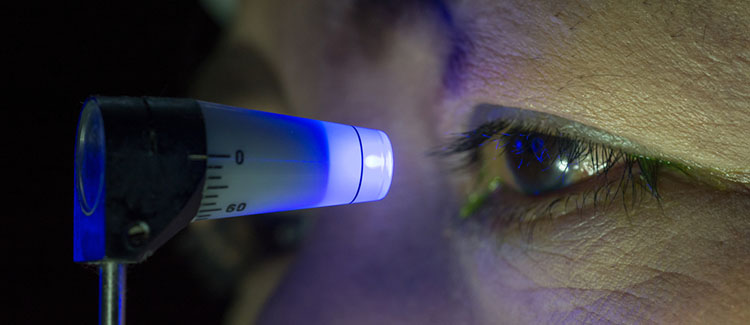Most people don’t know that glaucoma isn’t a unique condition; it can manifest in a variety of ways, each with different presentations. A small percentage of glaucoma patients are at risk of, or already have, what’s known as narrow angle glaucoma, a condition that, if left untreated, can lead to a more serious form of eye deterioration called angle-closure glaucoma.
Signs and Symptoms
Any form of glaucoma can progress slowly or quickly, appearing with common eye problems that might at first seem innocuous or unconcerning. The signs and symptoms of narrow-angle glaucoma are the same as all forms of glaucoma: high pressure in the eye, loss of vision or any determination of optic nerve damage by your ophthalmologist or eye care professional.
As with many vision problems, you might experience light sensitivity, have trouble seeing in darkness or find yourself straining to see objects in the distance or close-up. A change in the color of your iris, red-rimmed lids, double vision or pain in the eye are also indications that something could be wrong.
It’s important to realize that having these symptoms doesn’t mean you will be diagnosed with glaucoma. Also know that glaucoma might begin to affect you without providing noticeable warning signs. That’s why it is so important to have a yearly check-up with an ophthalmology professional who can test your eye health and rule out disease.

Risk Factors
If you are farsighted, your chances of getting narrow angle glaucoma may be higher because the anterior chamber of your eye could be especially small. If the chamber begins to age and change its shape or slope, your eye’s ability to drain fluid may become compromised due to the narrow angle through which it must pass. An Asian ancestry can also put you at higher risk for narrow eye angles.
Additional risk factors are similar to those of other forms of glaucoma, including past eye injury, genetics, steroid use or other reasons and factors related to optic nerve deterioration or high pressure inside the eye. Any single factor or combination of factors could indicate you’ve developed glaucoma, so it’s important to schedule regular check-ups with your eye doctor.
Treatment
A narrow-angle glaucoma diagnosis doesn’t mean blindness or severe vision loss will occur. When the condition is caught in early stages and treated, your eyesight can be preserved indefinitely. In cases of narrow-angle glaucoma that haven’t progressed into angle-closure, treatment might include eye drops to reduce pressure, laser surgery to create better drainage for the eye, or a surgical procedure that opens and expands the angle of fluid drainage. If you are diagnosed with angle-closure glaucoma, your doctor might perform an iridotomy, a laser treatment that puts a hole directly into the iris.
With a variety of treatment options and modern technology that permit your doctor to precisely measure the angles and fluid levels of your eyes, the prognosis for anyone diagnosed with glaucoma is better than ever before. If you have signs or symptoms of glaucoma, have experienced eye injury or are closely related to someone afflicted with the condition, make an appointment with your eye care professional to explain your risk factors. Regular complete check-ups will help identify the nerve damage and high pressure signaling all forms of glaucoma. With a proper treatment plan, you can keep your vision and enjoy seeing the world for years to come.
Posted October 30, 2017 by Silverstein Eye Centers